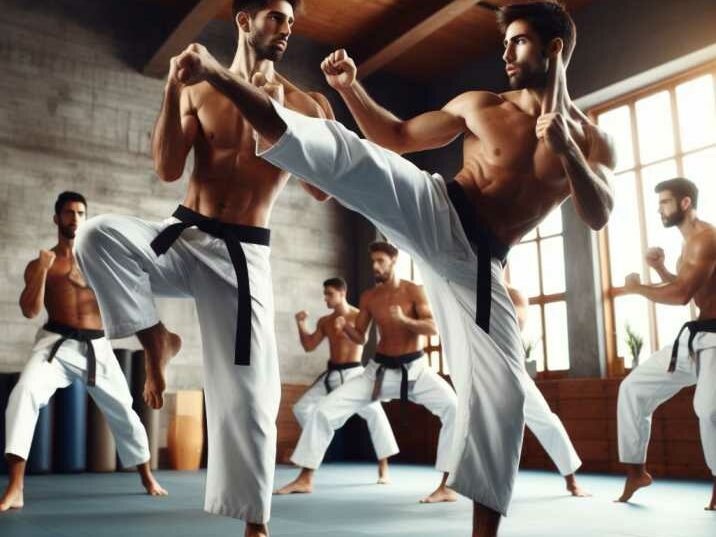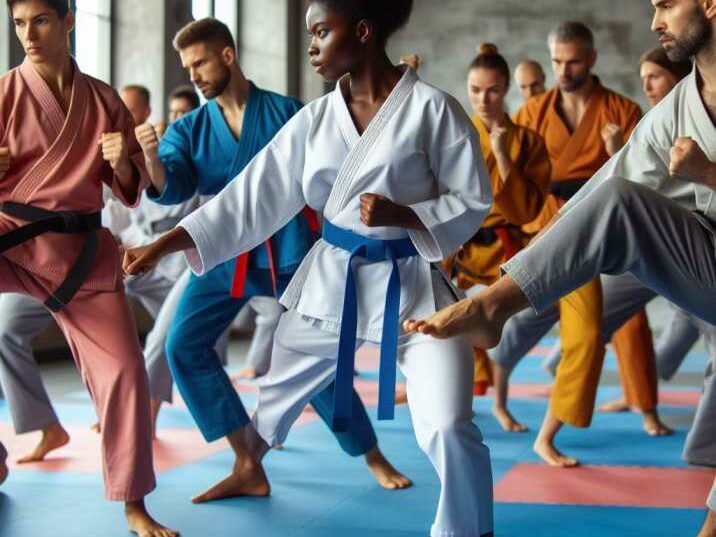Introduction:
Table of Contents
Martial arts have a rich history spanning centuries, originating from diverse cultures around the world. These ancient combat systems evolved not only as methods of self-defense but also as pathways to personal growth and spiritual development. Today, martial arts continue to captivate practitioners of all ages, offering a holistic approach to physical fitness, mental discipline, and emotional well-being. As individuals embark on their martial arts journey, the question often arises: which disciplines should one focus on? In this comprehensive guide, we delve into the intricacies of martial arts to combine to enhance skill development and achieve mastery.

Table of Contents:
- Introduction
- The Importance of Combining Martial Arts
- Criteria for Selecting the Best Martial Arts to Combine
- Top 2 Martial Arts to Combine
- 4.1 Brazilian Jiu-Jitsu (BJJ) and Muay Thai
- 4.2 Taekwondo and Boxing
- Brazilian Jiu-Jitsu (BJJ) and Muay Thai
- 5.1 Overview of Brazilian Jiu-Jitsu (BJJ)
- 5.2 Overview of Muay Thai
- 5.3 Why Combine BJJ and Muay Thai?
- 5.4 Training Methods and Techniques
- 5.5 Benefits of Combining BJJ and Muay Thai
- Taekwondo and Boxing
- 6.1 Overview of Taekwondo
- 6.2 Overview of Boxing
- 6.3 Why Combine Taekwondo and Boxing?
- 6.4 Training Methods and Techniques
- 6.5 Benefits of Combining Taekwondo and Boxing
- Conclusion
- FAQs (Frequently Asked Questions)
The Importance of Combining Martial Arts:
Martial arts encompass a vast array of techniques, philosophies, and training methodologies. While dedicating oneself to a single discipline can yield proficiency in specific areas, combining multiple martial arts offers a more comprehensive skill set. By integrating diverse styles, practitioners can adapt to a variety of combat scenarios, effectively addressing different ranges, tactics, and opponents. This versatility not only fosters a deeper understanding of martial arts but also cultivates creativity and adaptability in combat.
Criteria for Selecting the Best Martial Arts to Combine:
When selecting martial arts to combine, it’s crucial to consider several factors:
- Complementary Techniques: Look for disciplines that complement each other in terms of striking, grappling, and defensive maneuvers. The synergy between martial arts should enhance your overall proficiency in combat.
- Physical Demands: Assess the physical requirements of each martial art and ensure they align with your fitness goals and capabilities. Some styles may emphasize strength and endurance, while others prioritize flexibility and agility.
- Philosophical Alignment: Consider the underlying principles and philosophies of each martial art. Choose disciplines that resonate with your personal values and goals, whether they emphasize spiritual growth, self-discipline, or practical self-defense.
- Availability of Resources: Evaluate the availability of training facilities, qualified instructors, and training resources in your area. Access to quality instruction and supportive training environments is essential for skill development and progression.
Top 2 Martial Arts to Combine:
1. Brazilian Jiu-Jitsu (BJJ) and Muay Thai: Brazilian Jiu-Jitsu (BJJ): Developed from judo and traditional Japanese jiu-jitsu, BJJ focuses on ground fighting and submission grappling. Practitioners learn to control opponents, manipulate joints, and apply chokes and locks to achieve victory. Muay Thai: Hailing from Thailand, Muay Thai is renowned for its devastating striking techniques using fists, elbows, knees, and shins. Known as the “Art of Eight Limbs,” Muay Thai emphasizes powerful strikes, fluid combinations, and relentless forward pressure.
Why Combine BJJ and Muay Thai?
- Complete Combat Arsenal: BJJ excels in close-quarters combat and ground fighting, while Muay Thai dominates at mid-to-long-range striking. By blending these disciplines, practitioners develop proficiency in both stand-up and ground fighting scenarios, creating a well-rounded skill set.
- Strategic Advantage: The combination of BJJ’s grappling expertise with Muay Thai’s striking prowess creates a formidable arsenal of offensive and defensive techniques. Practitioners can seamlessly transition between ranges, exploiting openings and neutralizing threats with precision.
- Complementary Training Methods: Both BJJ and Muay Thai emphasize live sparring and realistic training scenarios, allowing practitioners to test their skills against resisting opponents. This hands-on approach fosters adaptability, resilience, and problem-solving skills essential for real-world combat.
2. Taekwondo and Boxing: Taekwondo:
Originating in Korea, Taekwondo is renowned for its dynamic kicking techniques, agility, and speed. Practitioners learn to deliver powerful strikes with precision and fluidity, utilizing a wide range of kicks, spins, and footwork patterns. Boxing: With its origins dating back to ancient times, boxing is a pillar of Western martial arts, focusing on punching combinations, head movement, and defensive tactics. Boxers develop exceptional hand-eye coordination, timing, and footwork through rigorous training and sparring.

Why Combine Taekwondo and Boxing?
- Dynamic Striking Arsenal: Taekwondo’s emphasis on kicking techniques complements boxing’s punching combinations, creating a diverse array of striking options. Practitioners can attack from various angles and distances, keeping opponents off-balance and unable to predict their next move.
- Footwork and Agility: Both Taekwondo and boxing prioritize footwork, movement, and positioning, allowing practitioners to evade attacks, create angles, and maintain distance effectively. Developing strong footwork enhances overall mobility, balance, and defensive capabilities.
- Adaptability in Combat: Taekwondo’s long-range kicks and Boxing’s close-range punches provide a versatile toolkit for self-defense and competition. Whether engaging from a distance or in close quarters, practitioners can adapt their tactics to suit the situation, maximizing their chances of success.
Conclusion:
In the dynamic landscape of martial arts, the journey towards mastery is a continuous evolution of skill, knowledge, and self-discovery. By combining complementary martial arts such as Brazilian Jiu-Jitsu and Muay Thai or Taekwondo and Boxing, practitioners embark on a transformative journey of growth and empowerment. These synergistic blends offer not only practical effectiveness in combat but also holistic development of the mind, body, and spirit. Whether pursuing self-defense, fitness, or personal growth, the fusion of martial arts disciplines opens doors to endless possibilities and endless potential.
FAQs:
- Can I combine any two martial arts, or are there specific combinations that work best?
- While you can technically combine any two martial arts, it’s essential to select disciplines that complement each other to maximize effectiveness. The combinations mentioned in this article have been chosen for their synergy and practicality.
- How long does it take to become proficient in two martial arts?
- The time required to become proficient in two martial arts varies depending on individual aptitude, dedication, and the complexity of the disciplines. Generally, consistent practice over several years is necessary to achieve mastery.
- Are there any risks associated with combining martial arts?
- Like any physical activity, martial arts training carries inherent risks of injury. It’s essential to train under the guidance of qualified instructors, use proper safety equipment, and listen to your body to minimize the risk of injury.
- Can children combine martial arts, or is it better to focus on one discipline at a time?
- Children can benefit from combining martial arts, but it’s crucial to consider their age, physical development, and interests. Starting with a foundational discipline and gradually introducing additional arts can provide a well-rounded martial arts education.
- How can I find reputable martial arts schools or instructors in my area?
- Researching online reviews, visiting local training facilities, and speaking with current students can help you assess the quality of martial arts schools and instructors in your area. Look for experienced instructors who prioritize safety, technique, and overall student development.


